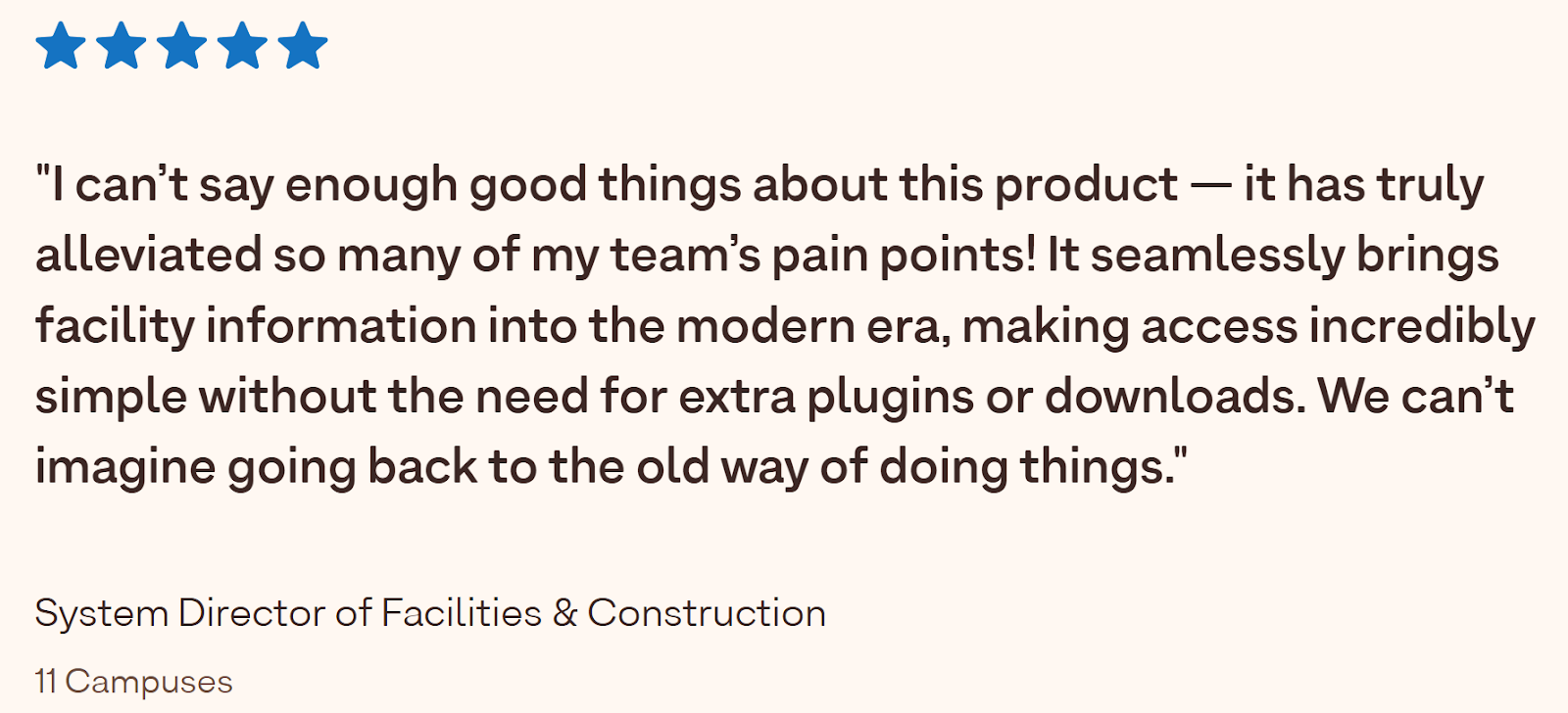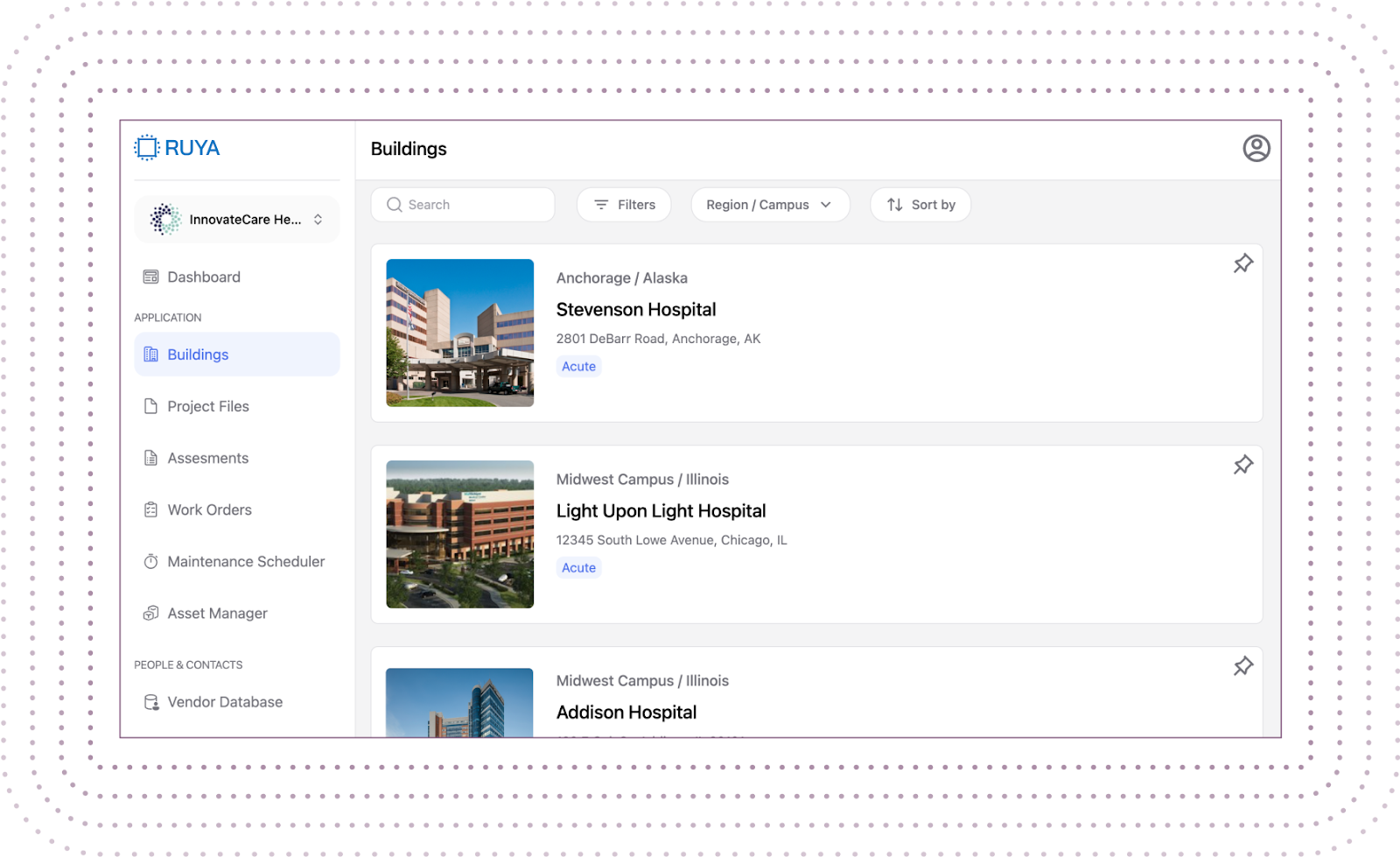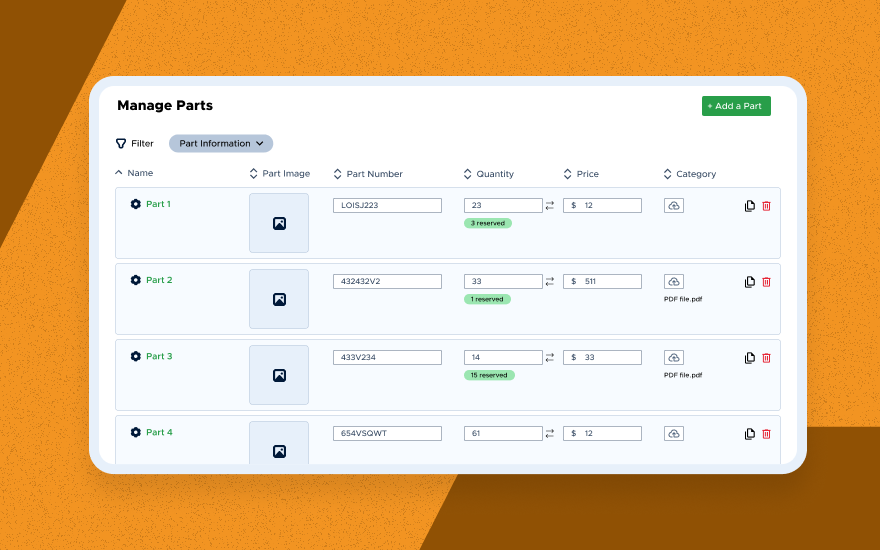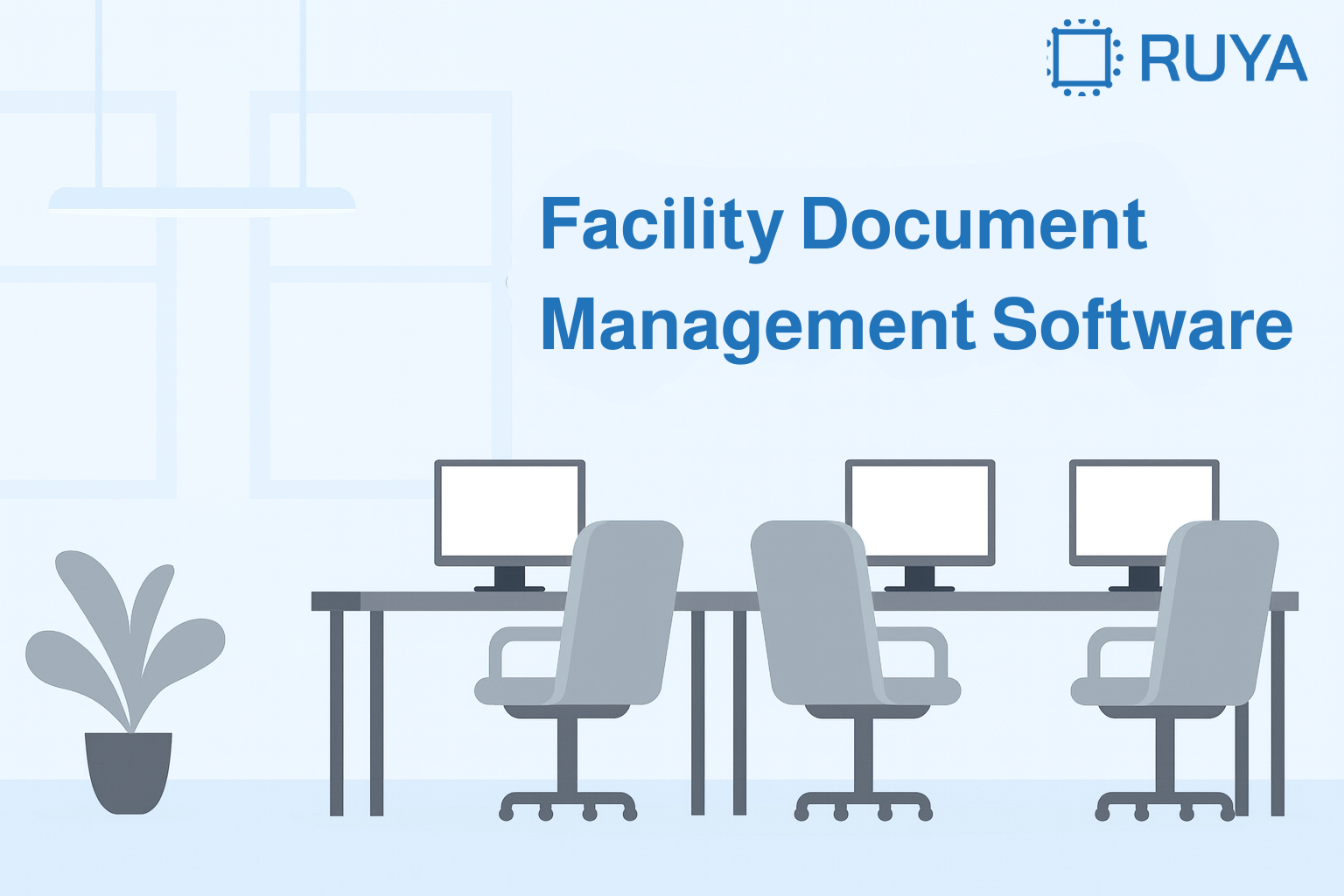Our list of the top hospital maintenance software for better efficiency

Quick summary
We explore the top hospital maintenance software tools, including Ruya, Limble CMMS, TheWorxHub, and eMaint, that centralize asset management, streamline compliance tracking, and improve operational efficiency. This guide highlights key features, benefits, and pricing to help large healthcare systems manage complex maintenance tasks and optimize facility performance.
Is your hospital ready to optimize maintenance operations?
Hospitals and healthcare systems manage over 6,000 facilities and nearly a million beds across the U.S., a scale that underscores why hospital maintenance software is essential. These tools improve workflow, reduce errors, and ensure regulatory compliance, while supporting large-scale operations efficiently.
Hence, in this Ruya guide, we’ve listed the best 8 hospital maintenance software for improved management. But first…
Why listen to us?
At Ruya, our hospital-focused platform centralizes facility management in a mobile hub with features like real-time CAD/BIM access, mobile inspections, and life safety collaboration. We’ve helped major healthcare systems streamline operations and maintain regulatory readiness, giving us proven insight into what drives efficiency and reliability in hospital maintenance software.

What is hospital maintenance software?
Hospital maintenance software helps healthcare facilities manage and maintain their physical infrastructure efficiently. It streamlines tasks like inspections, asset tracking, and compliance management in a centralized platform.
This software also ensures real-time updates on floor plans, maintenance schedules, and vendor management. With tools like mobile inspections and collaborative safety planning, hospital maintenance software supports seamless communication and improves operational efficiency across teams.
Why is hospital maintenance software important?
- Improved efficiency: Centralizes all facility management tasks, reducing manual work and streamlining processes.
- Enhanced compliance: Ensures hospitals meet safety and regulatory standards with real-time tracking and mobile inspections.
- Real-time updates: Provides instant access to updated floor plans, asset data, and maintenance schedules, improving decision-making.
- Reduced IT dependency: Minimizes the need for extensive IT infrastructure, cutting down operational costs.
- Better collaboration: Facilitates life safety plan collaboration and team coordination without requiring network access.
Top 8 hospital maintenance software
- Ruya
- Limble CMMS
- TheWorxHub by Brightly
- eMaint
- Factech
- Fiix CMMS
- Smart Hospital Maintenance (SHM)
- MaintSmart
1. Ruya

Ruya is a specialized digital platform tailored for hospitals managing extensive facility portfolios. Our platform consolidates disparate tools into a unified, mobile-friendly hub that supports the entire lifecycle of healthcare facility management, from design and construction to ongoing maintenance and compliance.
Ruya provides real-time visibility across departments, enhances asset utilization, and ensures regulatory compliance through automated documentation and reporting.
Key features
- Mobile inspections with code checklists: Conduct inspections directly from your phone using mobile forms, eliminating the need for paper checklists or spreadsheet uploads.
- Real-time floor plan access: View and manage up-to-date floor plans in various formats (PDF, DWG, Revit), ensuring accurate information is always at hand.
- Integrated vendor & asset directory: Maintain a comprehensive directory of vendors and assets organized by individual building, streamlining maintenance and compliance tracking.
- Life safety plan collaboration: Collaborate on life safety plans securely without requiring network access, keeping all stakeholders aligned and informed.
- Reduced IT dependency: Operate without the need for extensive IT infrastructure, simplifying implementation and reducing overhead costs.
Pricing
We offer custom pricing based on the number of campuses and required modules. For a tailored quote, contact us directly.
Pros
- Mobile inspections reduce actual field inspection time by hundreds of hours.
- Per-building asset/vendor directory eliminates repeated tracking errors across campuses.
- Real-time floor plan updates prevent costly maintenance delays.
- Built-in life safety plan collaboration keeps multi-campus teams aligned without VPNs.
- Minimal IT setup needed across large hospital systems.
- Code-checklist inspections improve audit readiness and reduce penalty risks.
Cons
- Some legacy drawing formats require manual clean-up during onboarding.
2. Limble CMMS

Limble CMMS is a general maintenance platform that streamlines operations in healthcare facilities. It offers a user-friendly interface and mobile access, enabling maintenance teams to efficiently manage work orders, preventive maintenance, and asset tracking.
Key features
- Work order automation: Create, assign, and track work orders to ensure timely maintenance and reduce downtime.
- Preventive maintenance scheduling: Automate and schedule routine maintenance tasks to prevent equipment failures and extend asset life.
- Asset management: Maintain a comprehensive database of assets, including maintenance history and performance data.
- Inventory management: Track spare parts and inventory levels to ensure availability when needed.
- Mobile access: Allow technicians to manage tasks and access information from anywhere using mobile devices.
Pricing
Limble CMMS offers a free plan and three paid plans:
- Standard: $28 per user, adds work requests, dashboards, and analytics.
- Premium+: $69 per user, includes inventory management, time tracking, and more.
- Enterprise: Requires a custom quote for advanced and custom features.
Pros
- Mobile work-order creation via QR codes improves field efficiency.
- Bulk asset imports minimize hours of manual data entry.
- Custom PM templates allow consistent preventive routines across sites.
- On-app chat support responds within minutes during rollout.
Cons
- Advanced reporting capabilities may require additional configuration.
- Inventory/parts workflows require toggling between modules, slowing tasks.
3. TheWorxHub by Brightly

TheWorxHub is a healthcare-specific CMMS built for compliance-driven maintenance operations. It integrates asset management, safety rounding, and life safety documentation into a cloud platform to streamline operations and ensure regulatory adherence. TheWorxHub is ideal for large healthcare organizations managing multiple facilities.
Key features
- Compliance pro module: Automates ICRA, ILSM, and PCRA permitting workflows directly within work orders.
- Digital compliance binders: Consolidate compliance work orders and attachments, organized by accreditation standards.
- Mobile capabilities: Enable technicians to update service requests, inspection requirements, and prioritize work orders on the go.
- Real-time data and analysis: Access built-in reports, predefined dashboards with KPIs, and data visualization tools.
- Preventive maintenance scheduling: Automate and schedule maintenance tasks to ensure equipment uptime and efficiency.
Pricing
Pricing information is not publicly available. Hospitals must contact sales for a customized quote based on their specific needs.
Pros
- Centralized asset and work order management.
- Reduces paperwork by consolidating multi-campus work requests into one platform.
- Strong support and regular updates.
- Scheduling features prevent technician overload and prioritize critical tasks.
Cons
- It may be overbuilt for small clinics.
- The mobile access interface sometimes lags or feels less responsive than the desktop.
4. eMaint

eMaint is a scalable cloud-based maintenance management system designed to support both single-campus hospitals and large multi-site healthcare systems. It centralizes work orders, asset lifecycle tracking, and compliance documentation to reduce downtime and improve regulatory readiness.
Key features
- Work order management: Create, assign, and track work orders to ensure timely maintenance and reduce downtime.
- Preventive maintenance scheduling: Automate routine maintenance tasks to prevent equipment failures and extend asset life.
- Asset lifecycle data: Centralizes asset records to support audits and replacement planning.
- Inventory management: Track spare parts and inventory levels to ensure availability when needed.
- Mobile access: Allow technicians to manage tasks and access information from anywhere using mobile devices.
Pricing
Offered in tiered plans (Team, Professional, and Enterprise) with custom pricing for large hospital networks. A free demo is available.
Pros
- Enables significant reduction in emergency repairs by shifting teams toward preventive maintenance.
- Supports operational scaling without needing additional staff or third-party tools.
- Positive customer feedback on ongoing customer support and training responsiveness.
- Offers detailed views of equipment performance and life cycles.
Cons
- Advanced reporting setup requires technical configuration or training, making self-service harder.
- Some users find the mobile interface less intuitive than the desktop and report slower UI responsiveness.
5. Factech

Factech is a unified hospital maintenance platform designed for healthcare facilities to manage asset maintenance, housekeeping, inventory, and compliance in one place. It helps hospitals to enhance operational efficiency, reduce downtime, and improve operational visibility across buildings and campuses without relying on separate software tools.
Key features
- Automated asset maintenance: Automates preventive maintenance schedules to minimize equipment failures.
- Housekeeping management: Streamlines cleaning schedules and tracks service requests.
- Inventory control: Monitors stock levels, manages reordering, and tracks item usage.
- Compliance tracking: Ensures adherence to healthcare regulations and standards.
- Mobile accessibility: Provides real-time updates and task management through mobile applications.
Pricing
Pricing is available upon request based on hospital size and selected modules.
Pros
- Mobile compliance tools reduce inspection delays.
- Asset lifecycle tracking supports better budgeting and capital planning.
- Centralized dashboard improves oversight across multiple facilities.
- Preventive scheduling reduces emergency repairs and extends equipment life.
Cons
- Onboarding includes manual data import for legacy systems.
- Some integrations require custom configuration and extra cost.
6. Fiix

Fiix is a cloud-based maintenance management system that optimizes operations in healthcare facilities. It offers a comprehensive suite of tools for work order management, preventive maintenance, asset tracking, and reporting. Its scalability and integration capabilities make it suitable for multi-site healthcare systems needing better visibility and control over equipment.
Key features
- Work order management: Create, assign, and track work orders to ensure timely maintenance and reduce downtime.
- Preventive maintenance scheduling: Automate routine maintenance tasks to prevent equipment failures and extend asset life.
- Asset management: Maintain a comprehensive database of assets, including maintenance history and performance data.
- Inventory management: Track spare parts and inventory levels to ensure availability when needed.
- Mobile access: Allow technicians to manage tasks and access information from anywhere using mobile devices.
Pricing
Fiix offers tiered pricing based on features and business needs:
- Free plan: Includes basic features like work orders and asset management.
- Basic plan: $45 per user/month, adds preventive maintenance scheduling and reporting.
- Professional plan: $75 per user/month, includes advanced analytics and multi-site management.
- Enterprise Plan: Custom pricing for large organizations with advanced needs.
Pros
- Faster task completion due to barcode scanning and mobile work order updates.
- Built-in integration options reduce IT involvement during rollout.
- Unlimited phone and email support is included in plans.
- Maintenance managers find that asset lifecycle visibility significantly improves budgeting and capital planning.
Cons
- Advanced KPI dashboards often require third-party tools for detailed analytics.
- Occasional slow load times and asset-management navigation challenges.
7. Smart Hospital Maintenance (SHM)

Smart Hospital Maintenance (SHM) is a comprehensive software solution that improves asset management and maintenance operations within healthcare facilities. It offers centralized control over equipment maintenance, documentation, and performance monitoring, aiming to reduce downtime and enhance operational efficiency.
Key features
- Asset management: Centralizes equipment data, including technical specifications and maintenance history, to streamline management.
- Maintenance scheduling: Automates preventive maintenance schedules to ensure timely servicing and reduce unexpected failures.
- Document management: Stores and organizes manuals, certificates, and maintenance records for easy access and compliance.
- Performance monitoring: Tracks equipment performance metrics to identify potential issues before they lead to breakdowns.
- Multi-facility support: Manages maintenance operations across multiple healthcare facilities from a single platform.
Pricing
Custom pricing only; quotes available upon request.
Pros
- Preventive scheduling improves uptime and reduces surprises.
- Dashboard gives real-time visibility into maintenance status across multiple facilities.
- Inventory alerts prevent critical parts shortages.
- Creates audit-ready compliance outputs.
Cons
- Legacy systems require manual data entry during onboarding.
- Integration with existing hospital systems sometimes needs custom development.
8. MaintSmart

MaintSmart is a maintenance platform built for hospitals operating across multiple facilities. It handles work orders, preventive tasks, asset management, and inventory control. MaintSmart suits facility teams in large hospital systems seeking rigorous preventive maintenance, asset lifecycle analysis, and inventory control across multiple buildings.
Key features
- Work order templates with attachments: Generates reusable work orders including parts lists, files, and instructions.
- Inventory & purchasing control: Tracks spare parts, requisitions, and purchase orders across locations.
- Reliability analysis & downtime tracking: Links failures to PM tasks and analyses MTBF (mean time between failures).
- Multi-site equipment hierarchy: Supports large hospital systems with complex facility/asset structure.
- Compliance documentation generator: Automatically compiles maintenance records and equipment history into audit-ready reports for regulatory inspections.
Pricing
Perpetual licenses start at $1,595 per user; enterprise systems require custom quotes.
Pros
- Significantly reduces unscheduled downtime through predictive scheduling.
- Inventory control cuts critical parts shortages in large facilities.
- Template work orders with detailed attachments improve consistency across technicians.
- Long-standing vendor support and global deployment.
Cons
- Mobile app capabilities are limited compared to the web platform in some hospitals.
- Integration with newer hospital systems requires custom configuration and extra cost.
Streamline your healthcare facility maintenance with Ruya
Managing healthcare facility maintenance is complex, but the right software can make all the difference. The tools highlighted in this list offer a range of features to improve asset management, compliance, and efficiency. Among them, Ruya stands out as a top choice for large healthcare systems.
Our specialized platform combines all facility management needs, from asset tracking to real-time updates and life safety planning, into one mobile-friendly hub. Designed for healthcare facilities, we reduce reliance on IT and ensure streamlined operations.
Start optimizing your hospital maintenance by booking a demo at Ruya today.

.svg)


